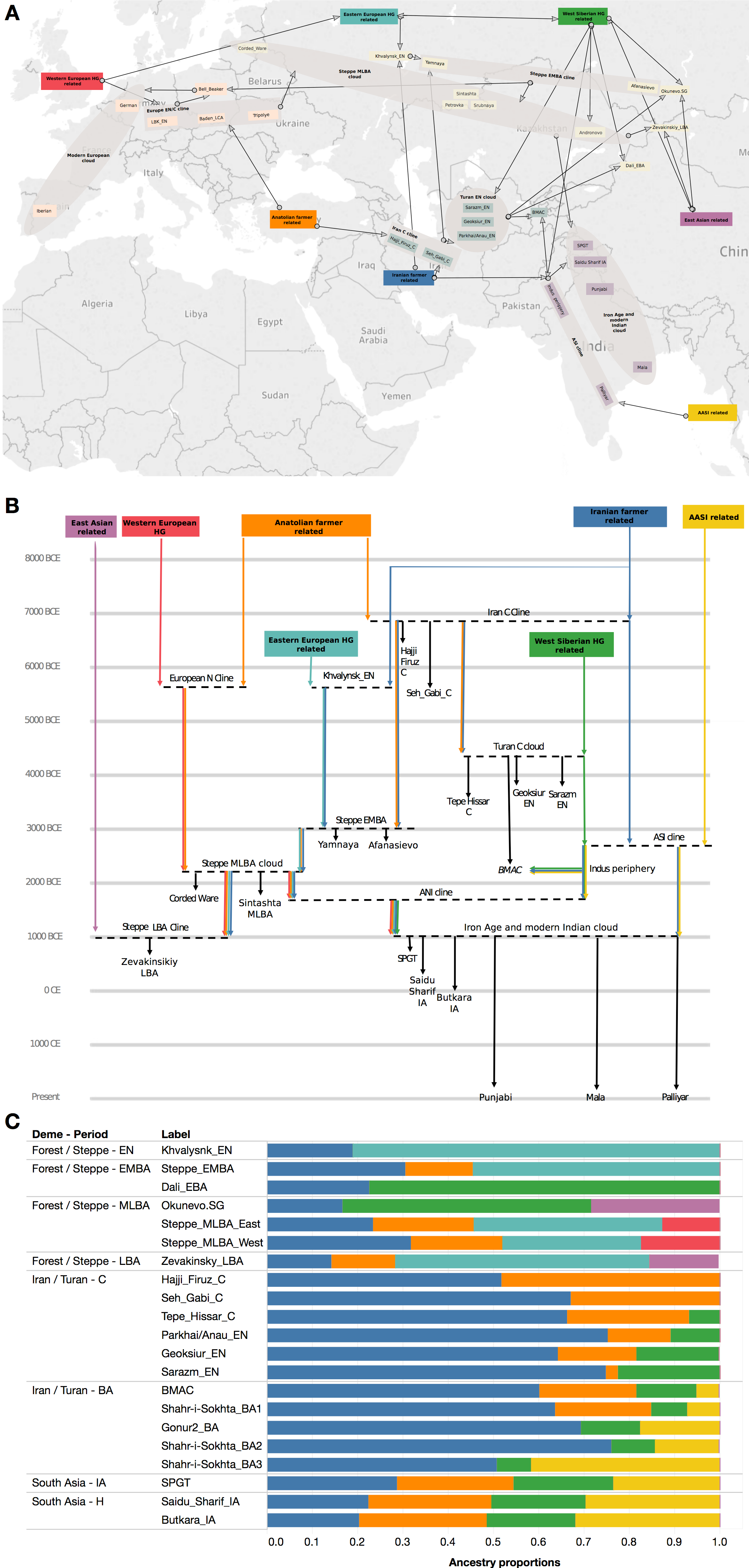Aknashen isn't mentioned in the "Southern Arc" paper except in a footnote and only as a settlement, not a genetic category. I guess that some of what I'm about to quote has been discussed already but here it is again because it's relevant to my question:
"By sequencing 727 ancient individuals from the Southern Arc (Anatolia and neighbors in Southeastern Europe and West Asia) over 10,000 years, we contextualize its Chalcolithic and Bronze Ages (~5000-1000BCE), when extensive gene flow entangled it with the Eurasian steppe. Two streams of migration transmitted Caucasus and Anatolian/Levantine ancestry northward, and the Yamnaya pastoralists, formed on the steppe, then spread southwards: into the Balkans, and across the Caucasus into Armenia, where they left numerous patrilineal descendants. Anatolia was transformed by intra-West Asian gene flow, with negligible impact of the later Yamnaya migrations. This contrasts with all other regions where Indo-European languages were spoken, suggesting that the homeland of the Indo-Anatolian language family was in West Asia, with only secondary dispersals of non-Anatolian Indo-Europeans from the steppe."
These claims were already controversial upon their release and seem already outdated. I guess it's going to take Lazaridis some time to accept that. People are drawing wild conclusions from such nonsensical theories, such as Albanian or Greek having originated in Iran like this Moja character.
Here's another quote from the "Southern Arc" paper:
"Anatolia is remarkable for its lack of steppe (Yamnaya or earlier) ancestry down to the Bronze Age. The ancestors of the Yamnaya were, however, substantially drawn from West Asia, mainly from the Caucasus, a process that had started by ~7,000 years ago, but also from the more southern Anatolian-Levantine continuum. The Bronze Age expansion of the Yamnaya into the Caucasus can thus be seen as a return to the homeland of about half their ancestors."
Well, we now know that there's no lack of steppe ancestry in Anatolia. The claim that the Caucasus-related admixture goes back as far as 7000 years ago is also outlandish, to say the least. That's too early. And what Anatolian-Levantine continuum? That far in the north? As Maciamo already posted, not one single E1b1b sample was found.
This is from the current paper:
"It was discovered that the Yamnaya had not only CHG-related, but also Anatolian Neolithic ancestry, absent in the early known steppe inhabitants, and derived from European farmer neighbors west of the steppe. This ancestry was later shown to be of rather Anatolian-Levantine-Mesopotamian origin, and to be mediated not from Europe but from the Caucasus neighbors south of the steppe. Such ancestry must have been added following the expansion of Neolithic farmers into the Caucasus, introduced thence into the steppe as a later exogenous element, distinct from the earlier CHG-related one."
It has been known for a while that the Yamnaya derived about 15% (some claims go as high as 20%) of their ancestry from the EEF. It seems that Lazaridis is trying to hold on to two contradicting claims about the source of the EEF/ANF ancestry. The dubious "Anatolian-Levantine-Mesopotamian" origin is repeated.
As a side note, I find it laughable that Sredny Stog has become Serednii Stih.




